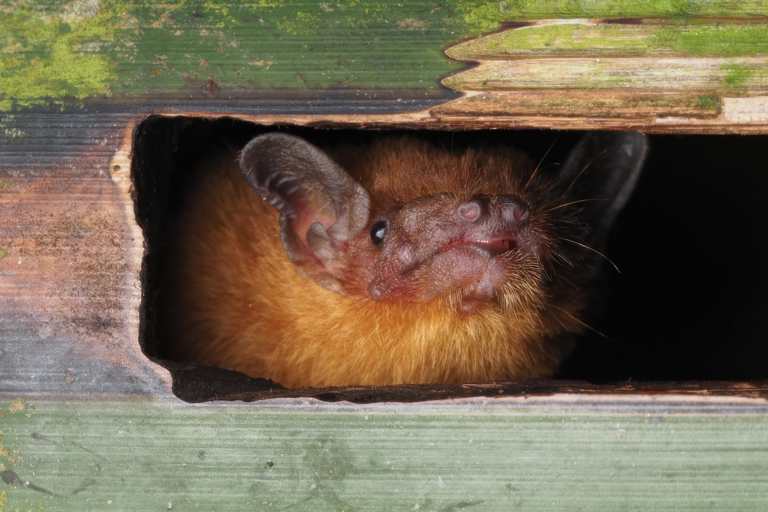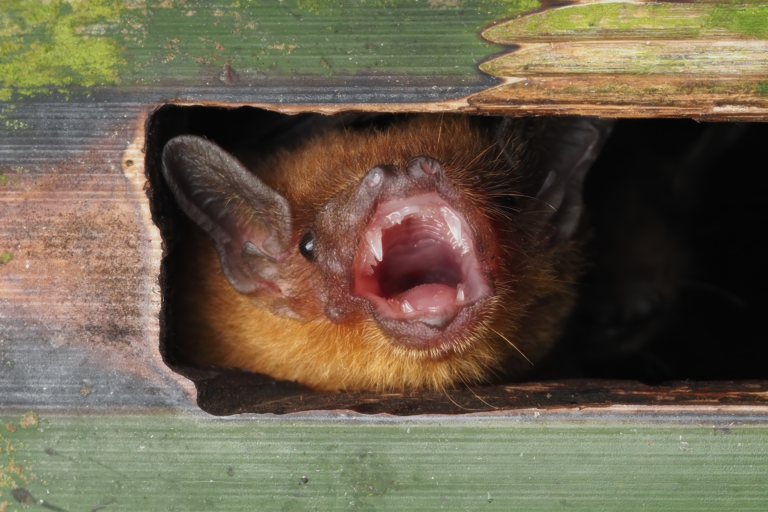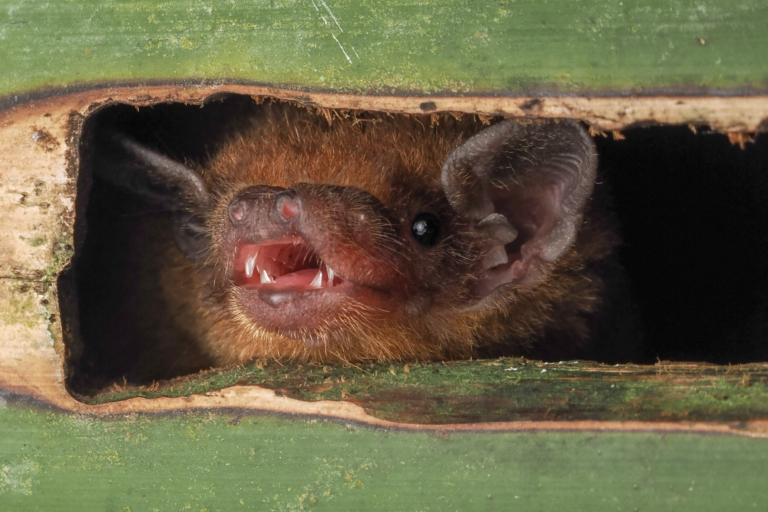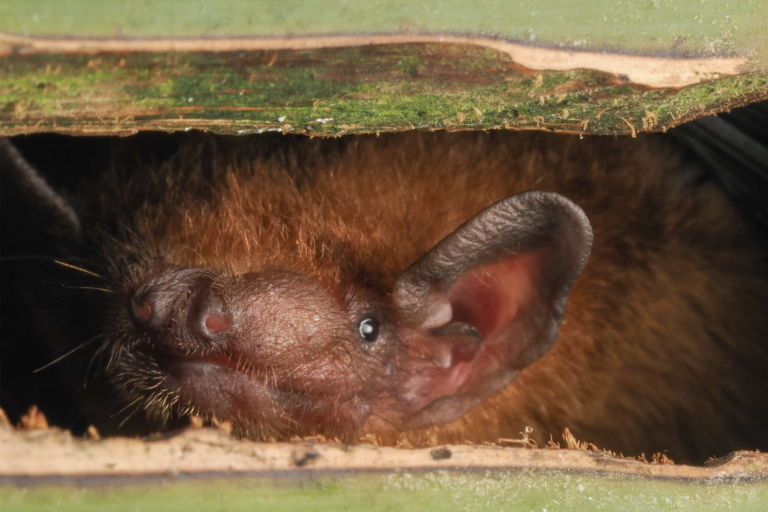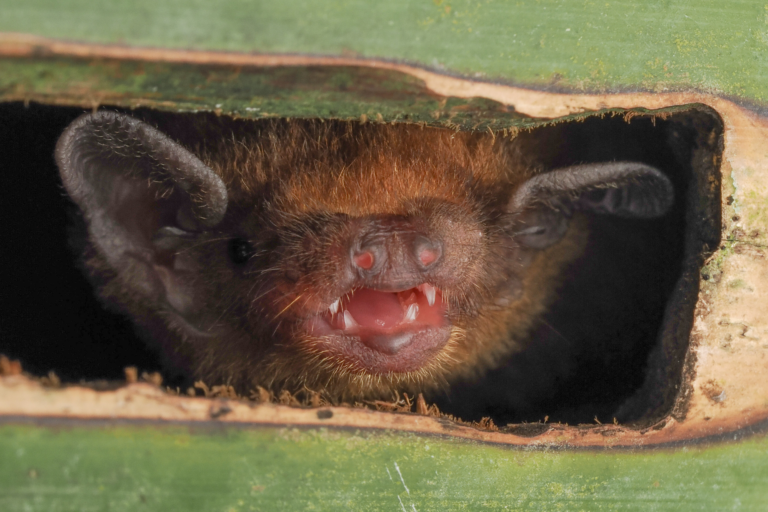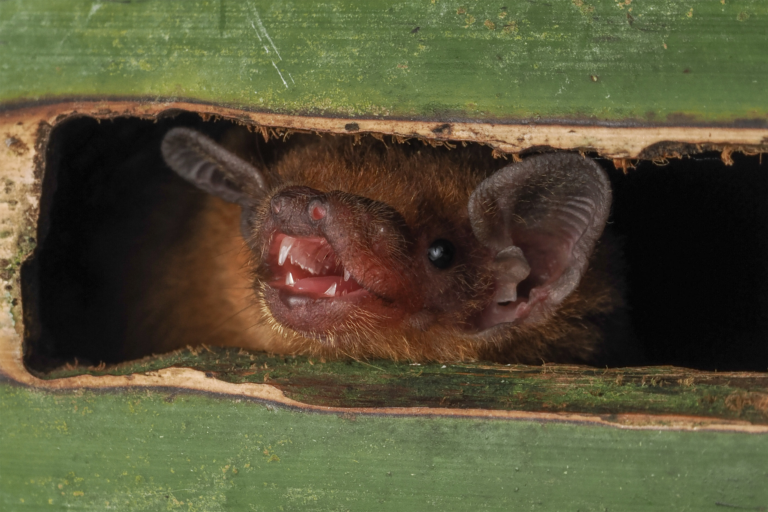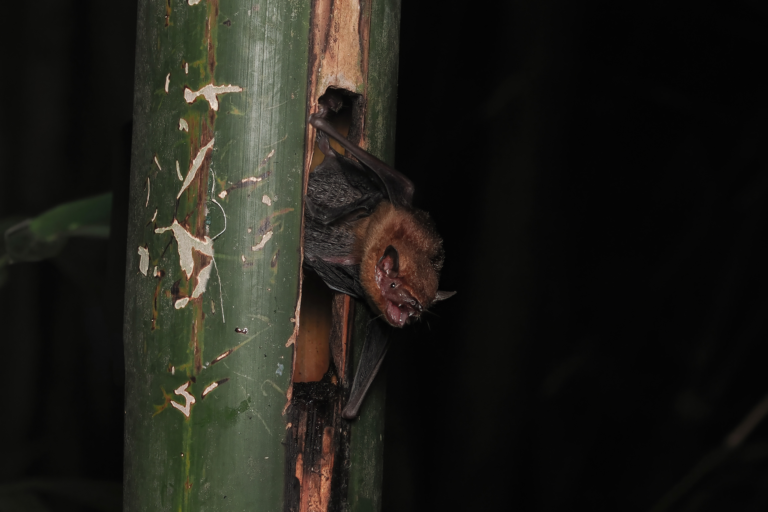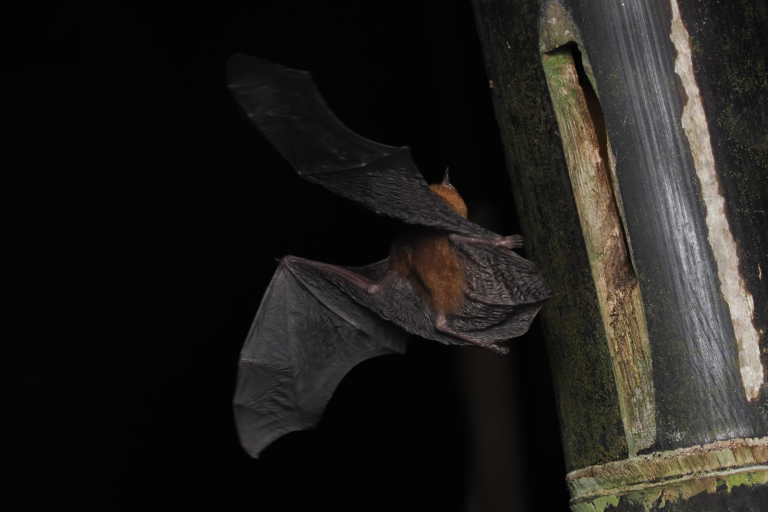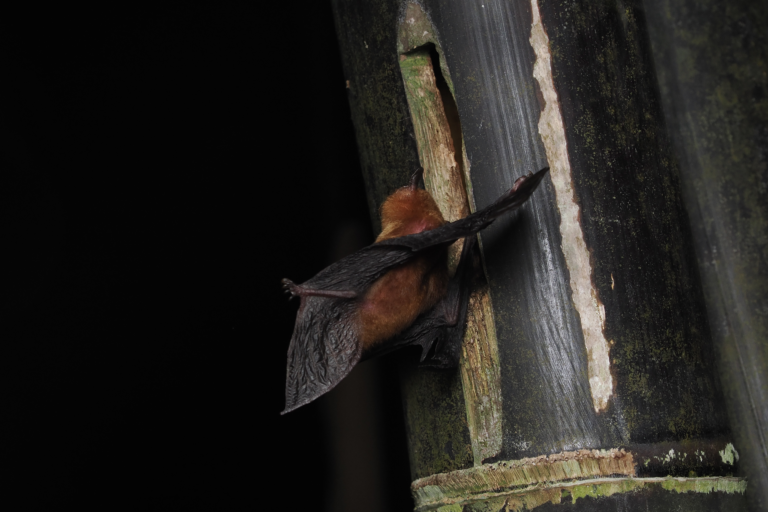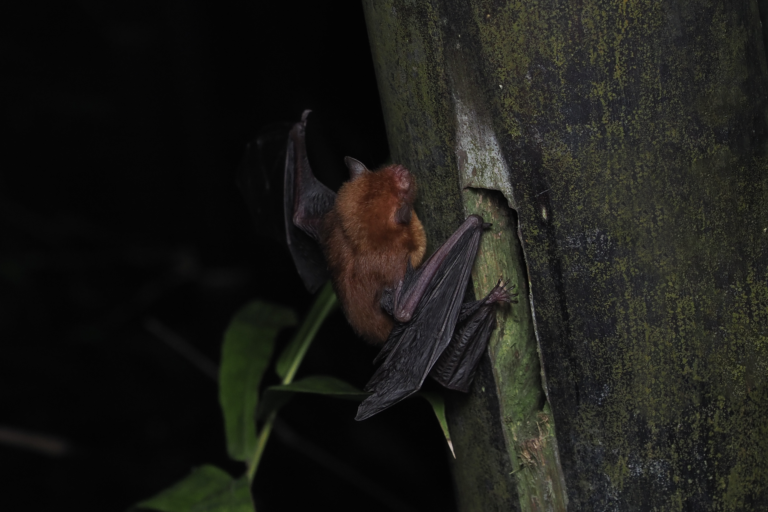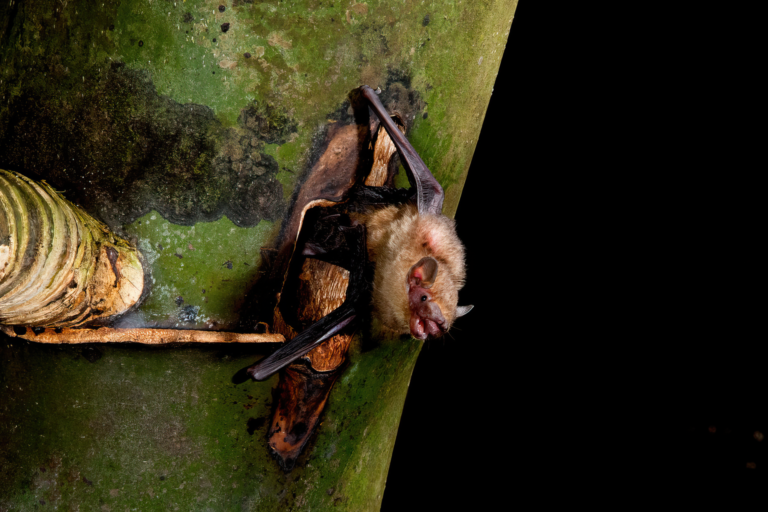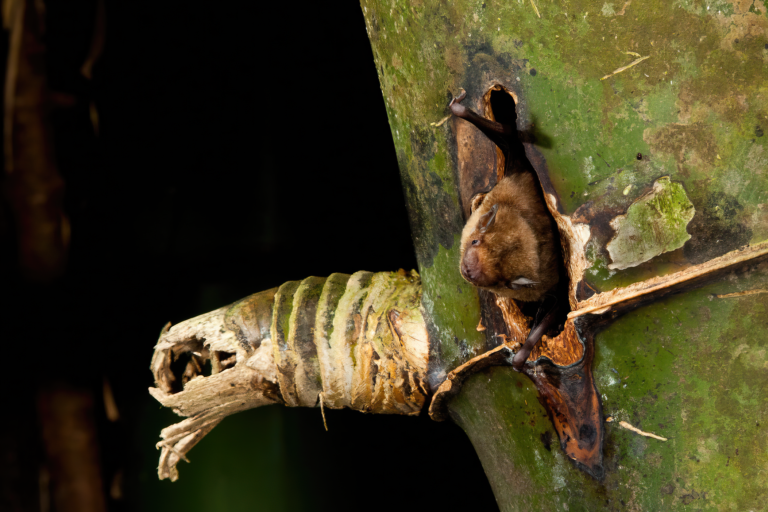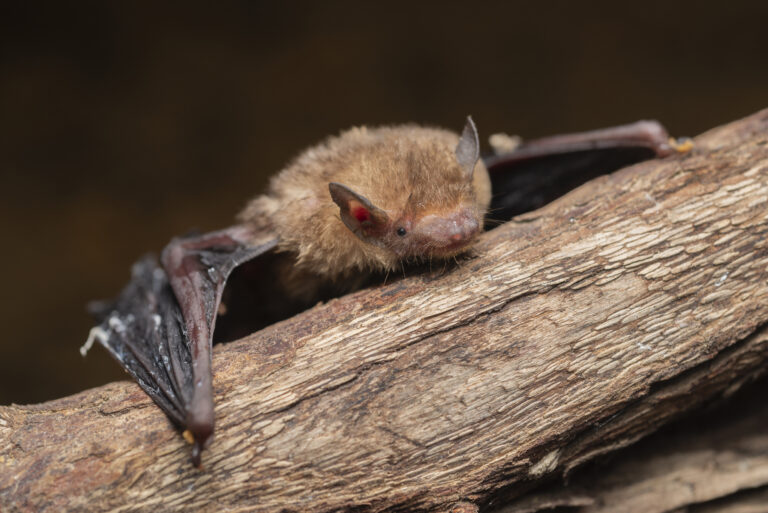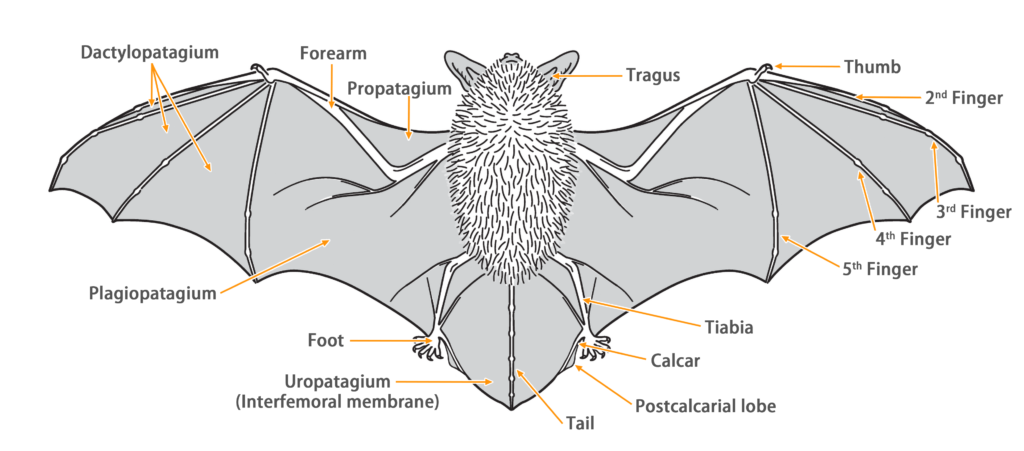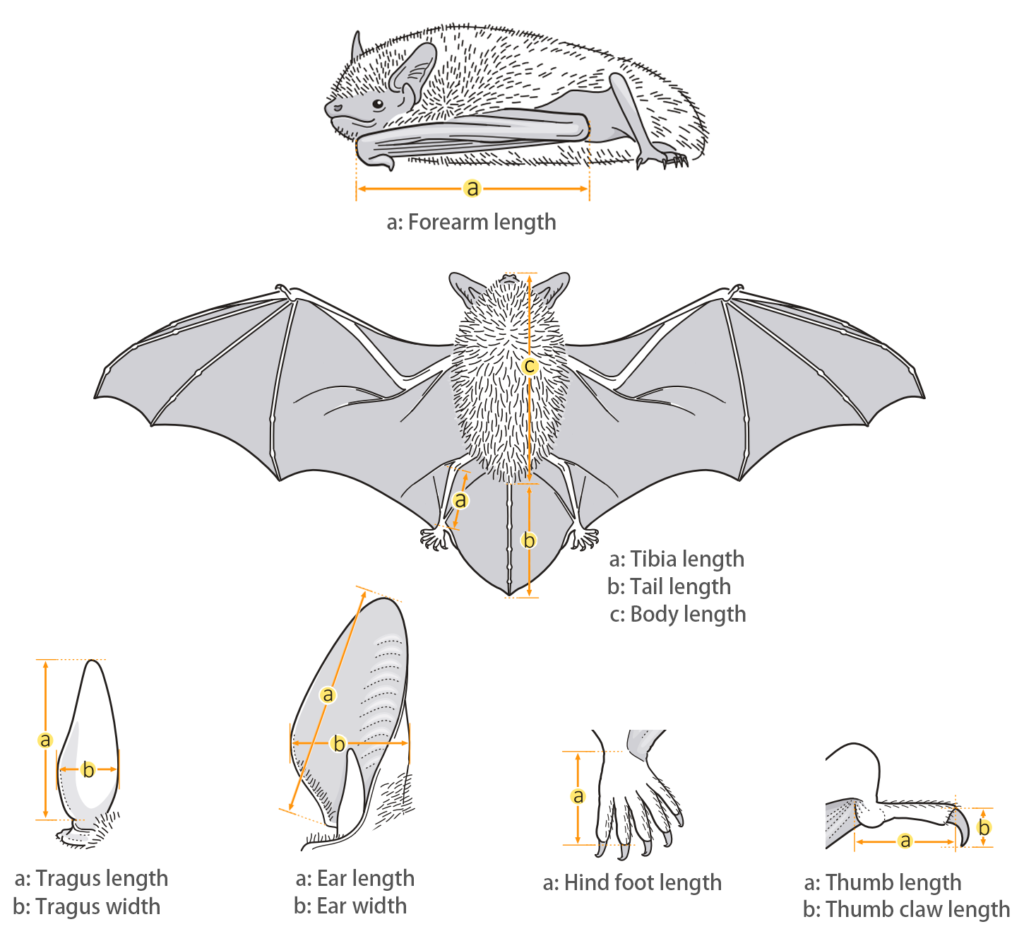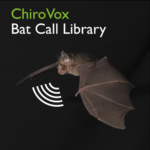- Hong Kong Bat Radar
- Indiamalayan Bamboo Bat (Tylonycteris fulvida)
Indiamalayan Bamboo bat
Tylonycteris fulvida (Blyth, 1859)
Taxonomy
| Family: | Vespertilionidae |
| Genus: | Tylonycteris |
| Scientific name: | Tylonycteris fulvida (Blyth, 1859) |
| Synonyms: | Scotophilus fulvida (Blyth, 1859) |
| Common name: | Indiamalayan Bamboo Bat |
| Other name: | Lesser Bamboo Bat, Indomalayan Bamboo Bat, Amber Bamboo Bat |
| Remark: | T. fulvida was initially considered a subspecies of T. pachypus. In 2017, Tu et al. conducted a taxonomic revision of the genus Tylonycteris, which is widely distributed in Southeast Asia, using molecular genetics and phylogeography. As a result, the populations of T. pachypus found in China and neighboring regions were reclassified as T. fulvida. |
| Characteristics | |
| Color: | The dorsal fur is short, dense, and glossy, ranging from golden yellow to brownish-yellow, with varying degrees of brown hues. The ventral fur is relatively lighter in color and sparser. Juveniles or subadults generally have darker overall fur coloration, with less prevalence of dark brown. Sometimes, subadults may show a mixture of dark brown and golden yellow hairs. |
| Ear: | The ear pinna is subtriangular in shape, with a broadly rounded tip; the tragus is short and blunt, resembling a diamond shape, with a somewhat rounded apex; both the tragus and ear pinna are predominantly brown with pinkish brown at base. |
| Head: | The head is small and flat. The snout is wide and short, with prominent lateral swellings; the whiskers surrounding the snout are golden yellow. |
| Limbs: | Base of pollices and soles of hindfeet have well-developed and brownish fleshy pads for gripping smooth surfaces. The pad is rounded for thumb and trapezoidal for feet. |
| Wings: | Wing membrane attaches at base of metatarsus. |
| Tail: | The tail is long, completely enveloped by the interfemoral membrane. The calcar is over halfway to tail from ankle and with narrow postcalcarial lobe. |
| Body measurements | |
| Size: | Small |
| Body: | 34.0 - 43.0 mm |
| Tail: | 19.8 - 31.7 mm |
| Ears: | 6.0 - 10.0 mm |
| Hind foot: | 3.9 - 6.3 mm |
| Forearm: | 22.9 - 27.9 mm |
| Weight: | 3.1 - 3.5 g |
| Wing morphology | |
| Wing span: | 0.190 m |
| Wing area: | 0.006 m2 |
| Wing loading: | 5.7 ± 0.6 N/m2 (Very Low) |
| Aspect ratio: | 6.2 ± 0.3 (Medium) |
| Tip-shape index: | 1.34 ± 0.3 (Medium) |
| Reference: | Zhang et al., 2006 |
Ecology
| Habitat: | They exhibit strong adaptability and can inhabit various environments, including forests, rural areas, and urban settings. They typically inhabit the hollow cavities between joints of bamboo, hanging upside down with their foot pads positioned on the top of the bamboo nodes. Suitable local bamboo species for them include Bambusa chungii , B. sinospinosa, B. lapidea, B. gibboides and B. vulgaris. |
| Habit: |
They exhibit gregarious behavior, with a bamboo forest accommodating several dozen bamboo roosts, varying in size and structure from single individuals to groups of several tens of individuals. A record of 38 individuals in a roosting group has been observed in the Guangxi region of China. Their group structure primarily consists of three types: "mixed-sex roosting" (55%), "single male roosting" (30%), and "multiple male roosting" (15%). Males tend to prefer solitary roosting, while females show a preference for group roosting.
Among different roosting groups, individuals frequently change bamboo internodes to roost, almost on a daily basis. Furthermore, there is frequent exchange of individuals or reformation of groups among different roosting groups. Each roosting group composition was established before entering the roosting internode. After each foraging period, they return to the bamboo forest and gather and hover in front of different roosting internodes. After hovering for a period of time, they gradually enter the internode one by one. Occasionally, one or several individuals may transfer and fly to another internode, forming a new roosting group with other bats or entering a vacant internode. Simultaneously, they may abandon their initially chosen internode during hovering and enter another internode instead. It has been documented that T. tonkinensis and T. pachypus can coexist within the same bamboo grove, typically roosting in different culms, although cohabitation within the same internode has also been observed. |
| Reproduction: | Their breeding season occurs from May to June, and they typically give birth to twins. Breeding colonies usually consist of one adult male bat, numerous adult female bats, and their offspring. The juveniles are capable of independent flight around 22-25 days after birth. |
| Hibernation: | They do not hibernate and remains active throughout the year. During periods of rapid temperature decline, it may become inactive. |
| Flight: | They have a relatively slow flying speed (4.3 m/s), but it possesses excellent agility, allowing it to maneuver more effectively in bamboo forests and complex environments compared to T. tonkinensis. They are not particularly efficient in flight or adept at hovering, making them more suitable for medium to short-distance flights. Their wingbeat frequency is relatively high, and they are accustomed to flying at low altitudes, typically staying within an airspace of around 4 meters above the ground. |
| Foraging: | They are crepuscular bats with two activity peaks during twilight and just before dawn, returning to their roosts for resting in between. They usually emerge approximately 15 minutes after sunset and 45 minutes before sunrise. The period of activity peaks are brief and typically lasting around 30 minutes. Once they leave their roosts, they tend to hover over or navigate through the bamboo thickets before flying directly to their foraging grounds, which can sometimes be located far from their roosting sites. They fly at medium to slow speeds, frequently circling and foraging above the canopy or water bodies. |
| Diet: | They are insectivorous bats, feeding on small flying insects while in flight. They employ their wing membranes for capturing prey and are also capable of directly catching small insects with their mouth. They particularly favor hunting insects from Hymenoptera (mainly Eulophidae and Diapriidae). Their diet also includes small insects such as termites. There is small overlap of food-niche with T. tonkinensis but they have smaller food-niche breadth and tend to feed on smaller insects. |
Diet composition of T. fulvida in China (Guangxi) (Zhang et al., 2005)
Distribution
| Local: | The New Territory, Hong Kong Island, Lantau Island and Lamma Island |
| Global: | |
| T. f. fulvida | East & Northeast India (Sikkim, West Bengal, Assam, Arunachal Pradesh, Meghalaya, Manipur, Mizoram, and Tripura), Bangladesh, Southeast China (Yunnan, Sichuan, Guizhou, Guangxi, Guangdong, and Hong Kong), and mainland Southeast Asia, as well as Andaman Islands (Karmatang, Webi, and the South Andaman); possibly also in Bhutan |
| T. f. aurex | South India (Kerala and Karnataka) (Moratelli et al., 2019) |
Local distribution map

Global distribution map
(Moratelli et al., 2019)
Status and Conservation
| First record: | 1996 |
| Origin: | Native |
| Local status: | Very Common (Shek & Chan, 2006) |
| National status: | Least Concern (Red List of China Vertebrates) |
| Global status: | Not Evaluated (IUCN Red List) |
| Potential threat: | TBC |
Echolocation
| Parameter | Value |
|---|---|
| Call structure | FM |
| Duration | 5.00 ± 0.90 ms |
| Inter pulse interval | 55.40 ± 12.40 ms |
| Peak frequency | 65.10 ± 2.80 kHz |
| Highest frequency | 129.20 ± 7.40 kHz |
| Lowest frequency | 58.30 ± 1.80 kHz |
|
Region: |
China (Guangxi) |
| Method: | Hand release |
| Reference: | Zhang et al., 2006 |
| Parameter | Value |
|---|---|
| Call structure | FM |
| Duration | 2.50 ms |
| Inter pulse interval | - |
| Peak frequency | - |
| Initial frequency | 139.50 kHz |
| End frequency | 62.90 kHz |
|
Region: |
Thailand |
| Method: | Hand release & Flight tent |
| Reference: | Thong et al., 2021 |
| Parameter | Value |
|---|---|
| Call structure | FM |
| Duration | 1.56 ± 0.80 ms |
| Inter pulse interval | 26.77 ± 12.15 ms |
| Peak frequency | 50.46 ± 13.05 kHz |
| Highest frequency | 134.40 ± 6.69 kHz |
| Lowest frequency | 39.40 ± 4.39 kHz |
|
Region: |
Thailand |
| Method: | Hand release |
| Reference: | Hughes et al., 2011 |
Similar Species
Indiamalayan Bamboo Bat
Tylonycteris fulvida
Size:
Relatively smaller
Color:
Varied from golden yellow to brownish-yellow
Muzzle:
Golden yellow whiskers
Ears:
Ear pinna and tragus are brown, with a lighter base
Flight:
Prefer low-altitude flight
Bibliography
Hua, P., Zhang, L., Zhu, G., Jones, G., Zhang, S., & Rossiter, S. J. (2011). Hierarchical polygyny in multiparous lesser flat‐headed bats. Molecular Ecology, 20(17), 3669-3680.
Hughes, A. C., Satasook, C., Bates, P. J. J., Soisook, P., Sritongchuay, T., Jones, G., & Bumrungsri, S. (2011). Using Echolocation Calls to Identify Thai Bat Species: Vespertilionidae, Emballonuridae, Nycteridae and Megadermatidae. Acta Chiropterologica, 13(2), 447–455.
Jayaraj, V. K., Tahir, N. A., Udin, N. A., Baharin, N. K., Ismail, S. K., & Zakaria, S. N. A. (2012). Species diversity of small mammals at Gunung Stong state park, Kelantan, Malaysia. Journal of Threatened Taxa, 4(6), 2617-2628.
Jiang, Z. G., Jiang, J. P., Wang, Y. Z., Zhang, E., Zhang, Y. Y., Li, L. L., Xie, F., Cai, B., Cao, L., Zheng, G. M., Dong, L., Zhang, Z. W., Ding, P., Luo, Z. H., Ding, C. Q., Ma, Z. J., Tang, S. H., Cao, W. X., Li, C. W., Hu, H. J., Ma, Y., Wu, Y., Wang, Y. X., Zhou, K. Y., Liu, S. Y., Chen, Y. Y., Li, J. T., Feng, Z. J., Wang, Y., Wang, B., Li, C., Song, X. L., Cai, L., Zang, C. X., Zeng, Y., Meng, Z. B., Fang, H. X., & Ping, X. G. (2016). Red List of China’s Vertebrates. Biodiversity Science 24(5), 500‑551.
Liu, S. Y., Wu, Y., & Li, S. (2022). Handbook of the mammals of China (3rd ed.). The Straits Publishing & Distribution Group.
Medway, L. (1972). Reproductive cycles of the flat-headed bats Tylonycteris pachypus and T. robustula (Chiroptera: Vespertilioninae) in a humid equatorial environment. Zoological Journal of the Linnean Society, 51(1), 33-61.
Medway, L., & Marshall, A. G. (1970). Roost-site selection among flat‐headed bats (Tylonycteris spp.). Journal of Zoology, 161(2), 237-245.
Medway, L., & Marshall, A. G. (1972). Roosting associations of flat-headed bats, Tylonycteris species (Chiroptera: Vespertilionidae) in Malaysia. Journal of Zoology, 168(4), 463-482.
Moratelli, R., Burgin, C., Cláudio, V., Novaes, R., López-Baucells, A., & Haslauer, R. (2019). Vespertilionidae. In Mittermeier, R. A., & Wilson, D. E. (Eds.), Handbook of the Mammals of the World – Volume 9 Bats. (pp. 716-981). Lynx Edicions.
Shek, C. T. (2006). A Field Guide to the Terrestrial Mammals of Hong Kong. Friends of country park and cosmos book limited.
Shek, C. T. & Chan, C. S. M. (2006). Mist Net Survey of Bats with Three New Bat Species Records for Hong Kong. Hong Kong Biodiversity, 11, 1-7.
Thong, V. D., Denzinger, A., Sang, N. V., Huyen, N. T. T., Thanh, H. T., Loi, D. N., Nha, P. V., Viet, N. V., Tien, P. D., Tuanmu, M.-N., Huang, J. C.-C., Thongphachanh, L., Luong, N. T.,& Schnitzler, H. U. (2021) Bat Diversity in Cat Ba Biosphere Reserve, Northeastern Vietnam, A Review with New Records from Mangrove Ecosystem. Diversity, 13(8), 376.
Tong, C. P. (2016). Distribution and preference of landscape features and foraging sites of insectivorous bats in Hong Kong urban parks. [Master’s thesis, The University of Hong Kong].
Tu, V. T., Csorba, G., Ruedi, M., Furey, N. M., Son, N. T., Thong, V. D., Bonillo, C., & Hassanin, A. (2017). Comparative phylogeography of bamboo bats of the genus Tylonycteris (Chiroptera, Vespertilionidae) in Southeast Asia. European Journal of Taxonomy, 274, 1–38.
Wei, F. W., Yang, Q. S., Wu, Y., Jiang, X. L., Liu, S. Y., Li, B. G., Yang, G., Li, M., Zhou, J., Li, S., Zhou, J., Li, S., Hu, Y. B., Ge, D. Y., Li, S., Yu, W. H., Chen, B. Y., Zhang, Z. J., Zhou, C. Q., Wu, S. B., Zhang, L., Chen Z. Z., Chen, S. D., Deng, H. Q., Jiang, T. L., Zhang, L. B., Shi, H. Y., Lu, X. L., Li, Q., Liu, Z., Cui, Y. Q., & Li, Y. C. (2021). Catalogue of mammals in China (2021). Acta Theriologica Sinica, 41(5), 487–501.
Wu, Y., Zhang, C. J., Liang, Z. W., & Yi, Z. S. (2007). Study on species diversity of Chiroptera in Guangzhou. Journal of Guangzhou Univerisity (Natural Science Edition), 6(2), 14-17
Zhang, L. B., Lu, L. R., Zhou, S. Y., Zhao, H. H., Lou, G. H., & Zhang, S. Y. (2002). Comparison of the echolocation signals in two species of flat-headed bats at flying. Zoological Research, 23(4), 296-300.
Zhang, L. B., Liang, B., Zhou, S. Y., LU, L. R., & Zhang, S. Y. (2004). Group structure of lesser flat-headed bat Tylonycteris pachypus and greater flat-headed bat T. robustula. Acta Zoological Sinica, 50(3), 326–333.
Zhang, L. B., Jones, G., Rossiter, S., Ades, G., Liang, B., & Zhang, S. Y. (2005). Diet of flat-headedbats, Tylonycteris pachypus and T. robustula, in Guangxi, South China. Journal of Mammalogy, 86(1), 61–66.
Zhang, L. B., Liang, B., Parsons, S., Wei, L., & Zhang, S. (2006). Morphology, echolocation and foraging behaviour in two sympatric sibling species of bat (Tylonycteris pachypus and Tylonycteris robustula)(chiroptera: vespertilionidae). Journal of zoology, 271(3), 344-351.
Zhang, L. B., Wang, F. M., Liu, Q., & Wei, L. (2015). The activity time of the lesser bamboo bat, Tylonycteris pachypus (Chiroptera: Vespertilionidae). Zoologia (Curitiba), 32, 201-206.
Hong Kong Bat Radar. (18/05/2025). A Field Guide to Bats of Hong Kong: Indiamalayan Bamboo Bat (Tylonycteris fulvida ). https://hkbatradar.com/en/tylonycteris_fulvida
